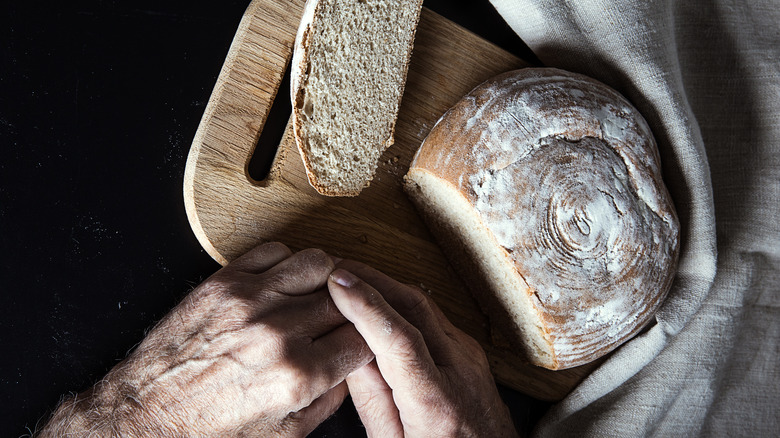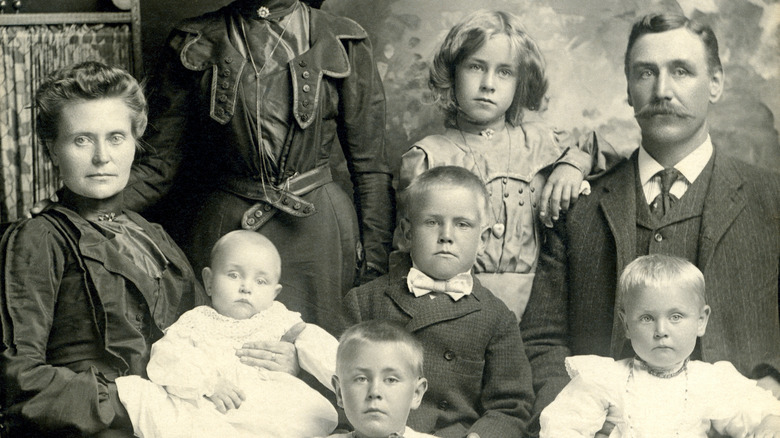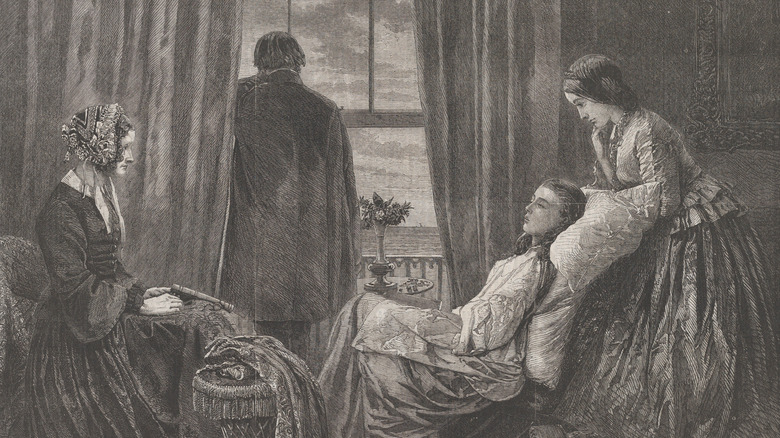The Dangerous Ingredient Victorian Bakers Sometimes Added To Bread
The Victorian era was a time of growth — economically, socially, and for cities — in astronomic numbers. It spans the years of 1820-1914 during the reign of Queen Victoria and through King George V, per Britannica. London saw massive physical growth and by 1850 was the largest city in the world according to the BBC. Growth like that had to be accommodated and many ingenious technological advances and modern inventions came about — some of the greatest of our time like electricity and plumbing, as well as social breakthroughs like the abolition of slavery and the passage of the Married Women's Property Act.
Mass production of products resulted in a dramatic price drop, enriching the middle class. More demand led producers and factories to find ways to meet the demand and still make a buck, continues the BBC. However, some of these ways were truly lethal. Some inventive solutions to feed, water, and house millions became health hazards and some economic shortcuts became shortcuts to the grave. The rise of diseases like cholera and rickets prompted government response and caused some, like famed doctor John Snow, to look into water and nutrition as a cause for common and deadly diseases.
A Victorian family ate 55 pounds of bread
John Snow suggested that bread, the staple of the Victorian diet, might be to blame for rickets in particular. An average Victorian family of six consumed 55 pounds of bread a week. A middle-class family would spend more than half their income on food, writes English Historical Fiction Authors. Bread was so important that the minimum wage was determined by the cost of bread, according to The Victorian Web. Communal village bakeries had been common for centuries and in crowded London, most middle-class Victorian homes did not have room to accommodate baking on that level, explains the Daily Mail. White flour was demanded from all but the poor, so bakeries started making two types of bread — a household loaf with cheap-quality flour and a higher-quality loaf for people of status like doctors and clergy — both as white as they could get them.
Mechanical milling and grinding was a recent invention, making flour quickly accessible. With the price of wheat at an all-time low, the middle class was demanding bread, explains historian Rachel Laudan. Milling was able to remove wheat germ, leaving flour whiter than ever before. A loaf of white bread was considered light, airy, and most importantly pure. Most assumed that the puffy, white bread they were purchasing was made of the finest and purest ingredients.
Bakers added alum to bread
But as early as the late 1700s, bread manufacturers had been adulterating flour for profit. In 1750, a report accused bakers of adding substances to their bread to make it whiter, writes the Federation of Bakers. And while Parliament banned any additives, bakeries ignored the ban. By the Victorian age, the adulteration of bread was common. Cheaper and inferior ingredients didn't just whiten the bread but added weight and bulk — the appearance of heavy bread and the weight of a quarter loaf. The bread was sold by weight, usually, as a quarter pound, explains the The Victorian Web. Bakers would often cook the bread in hot ovens so that it would look done on the outside but remain doughy inside so that it could be sold at an increased weight.
The additives that bakers used to fluff, whiten, and prolong their bread included plaster of Paris, bean flour, chalk, ground-up bone, and alum (via BBC). These substances became so common in foods that by the 19th century, people began to prefer the taste of them, writes the Royal Society of Chemistry. Alum is a derivative of aluminum and was used to add bulk to bread so that bakers could charge more. Alum was freely available, cheap, and tasteless and it made the bread unnaturally white, according to History Collection. And even if bakers weren't adding alum to their bread, it might have been added to the flour by the miller.
Alum led to malnutrition
However, alum led to myriad health issues — like bowel problems, constipation, and chronic diarrhea — which were often fatal for children, continues the BBC. The Social Historian explains that it interfered with stomach acid, interrupting the digestion of nutrients, often resulting in malnutrition. The outbreak of disease, particularly rickets, led John Snow to write an article in the Lancet claiming the adulteration of food could be the cause of the extreme case of the disease in both poor and rich communities. While this was later disproved, it highlighted the common practice of food adulteration. The Royal Society of Chemistry claims that health inspectors were "appalled" at the number of additives in bread. In 1872 Arthur Haskill wrote an expose on food, stating that these ingredients would "be sure to act injuriously in the long run," says The Social Historian. His expose led many food manufacturers to request inspections so that they could advertise that their products were wholesome, using his name as a symbol of purity. It wasn't until the 1870s that the government started policing ingredients and food purity, writes English Historical Fiction Authors.



